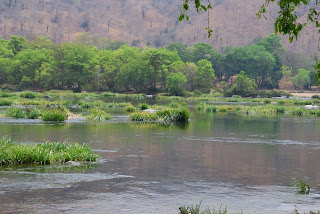To break the madness of the city and from our routines, we wanted to go to a place which was not a typical tourist place. Therefore we opted for Kotagiri. Kotagiri is a hilly town situated in the Nilgiris of Tamilnadu state. This place is near Ooty. The distance from Kotagiri to Ooty is approximately 29kms. Since Kotagiri is in Tamil Nadu, the official language is Tamil. Since it's a tourist place, Malayalam, Kannada, Hindi and English can be used for communication.
We wanted to stay in the middle of nature for a couple of days hence we opted for Adubettu leisure homes in Kotagiri.
This place is really awesome. Greenery everywhere, calm and serene, the chirping of birds, huge Bisons and green hills. One suggestion from me, you should have very good driving skills to reach the homestay, as it's in the middle of Tea estates and forest. The roads here are curvier, bumpy, Kucha, sharp and steep slopes to reach the place.
 |
Adubettu leisure homes is in the heart of Nature. The accommodation here is wooden houses on stilts. When we visited, they were three cottages with a small play area where we can spend time playing badminton and cricket. (We had carried our own items for playing with us).
The best thing about this place is the bisons. You will definitely spot bisons in the estate premises. We spotted a number of bisons too during our visit. As they were coming nearer to our cottage from the nearby hills, we went inside our rooms and had a glance from our windows. We are fortunate enough that these beautiful bisons chose to spend time right below our cottages for more than an hour.
This place is very quiet since it is far away from crowded human habitation. This place has absolute silence except few estate workers in the morning hours. Kids might find it difficult to stay at such places since there are no T.V. and cell phone signals. Because of our previous travels, my kiddo was well trained to stay at such places.
Although our main motto of the visit was birding, we had very good sightings of bisons within the estate premises. Every day from 4 pm you can expect routine visitors I mean bisons. we had good birding experience at this place too. I will share the list of birds we spotted here in a later post.
On our way to this stay, we met with a couple of like-minded people who were on their way to do Bear watching. I am hoping one day that I will go bear watching too.
As we are vegetarians and the food here was predominantly non-veg, we opted to have all our meals at Kotagiri town. Though the town is just 5 km from the estate it took us a lot of time to reach there due to Kucha and bumpy roads. We had our lunch and dinners at Hotel Nahar's Retreat and Wellness, Kotagiri.
The beautiful serene surroundings, appealing wooden houses, sightings of bisons, wonderful hills all around, relaxing games with friends, scary roads, awesome climate - it was all a feast for eyes and pleasant memories brought home.
The days I cherished here makes me tell - "one more time please…..".
Finally here's my rating
Accommodation: 4****
Food: NA (since we didn't have any food here)
Location: 5 * * * * *





















